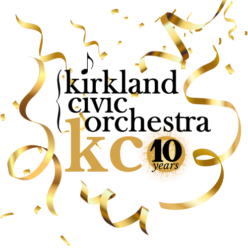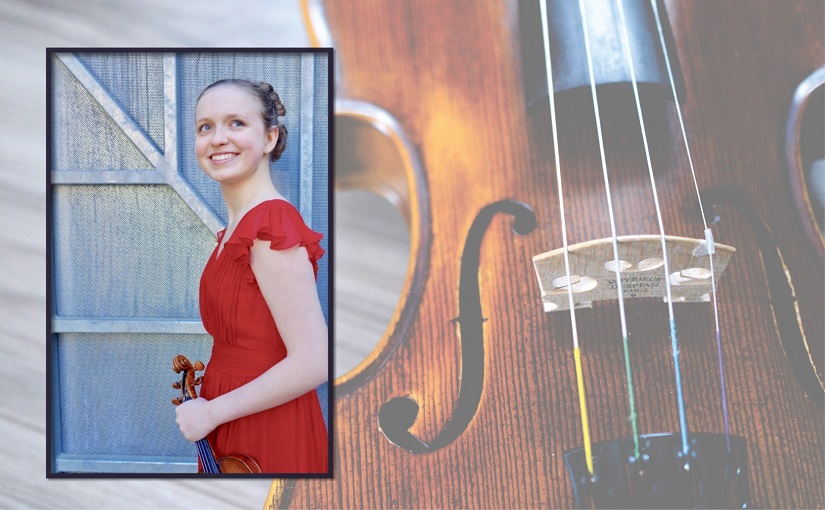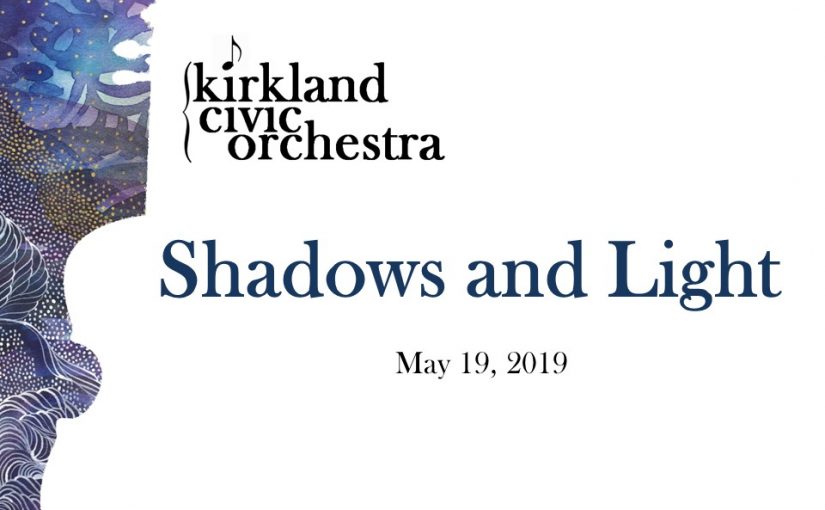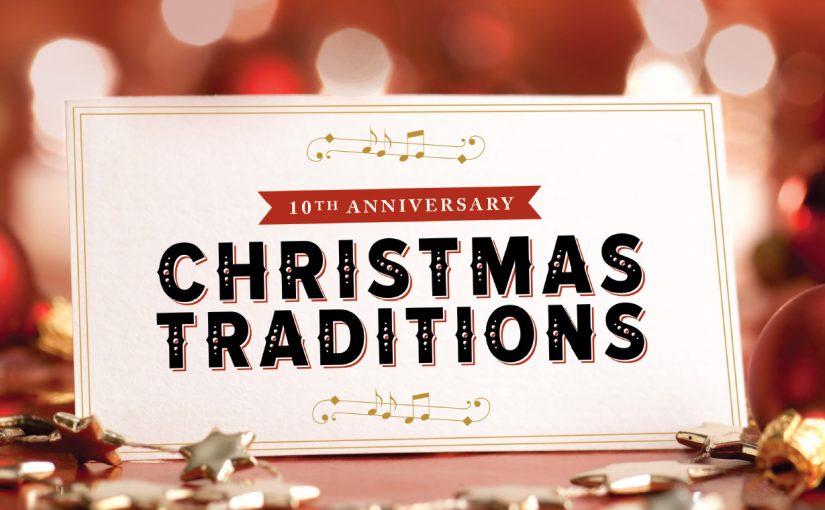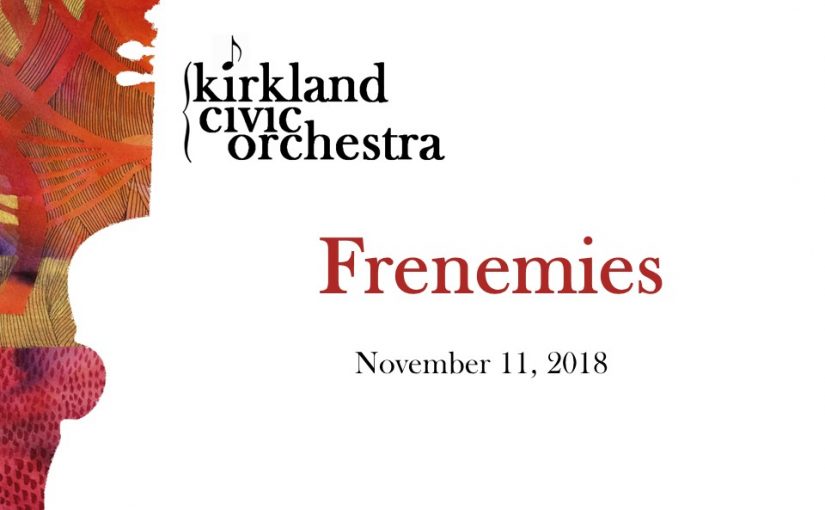Violin Soloist – Amnon Govrin
Amnon Govrin will play the Vaughan Williams solo The Lark Ascending at our next performance. Amnon is also a fellow musician in the KCO as the concertmaster. We discussed his upcoming performance and playing in the KCO.
When did you start playing music and why the violin?
If you were doing so much music, why not pursue music?
How did you progress from concert master to doing a solo?
Can you give your thoughts on the solo?
KCO: When did you start playing music and why the violin?
Amnon: My brother started to play the piano when I was 5 (he was 9). The story in my family is that I wanted to play something too, but the violin and not the piano. Granted, it was a good choice, as I stuck with it long after my brother stopped playing the piano 5 years later.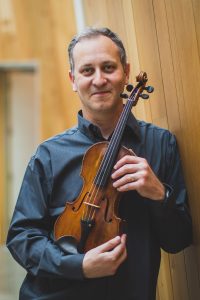
My dad wanted to play the violin himself, but couldn’t do that in the 1920’s and 30’s and then, of course, the second world war in Romania, so he didn’t get to do that. I can imagine that even though he says that I picked the violin, he had something to do with it as well.
KCO: Where did that take you, from 5 years old onward?
A: I started playing, then after several years, my brother stopped playing the piano. I continued. When I was 12, I joined the Haifa Youth Symphony Orchestra and after a few years became the concertmaster. Then, when I went to college, I went to an engineering college, the Technion. I played in the orchestra there as the concertmaster as well. After college, I played on and off without any real consistent playing and that’s it.
KCO: Where was this?
A: I grew up in Haifa, Israel. At schools there, unless they were art schools, there wasn’t any orchestra. The municipal orchestra was a great place for all the kids from all the surrounding cities to play in an orchestra, all the instruments. A big span of ages from around 10 to 20 and sometimes beyond. We also went to Europe to do a bunch of festivals and competitions so a pretty cool experience as a teenager.
KCO: That sounds fantastic. I had similar kinds of experiences. I really cherished them.
A: The big kids take care of the little kids, there are some parents who chaperone, but it’s kind of like a big family going together, playing and meeting other people.
KCO: How did you make that decision? If you were doing so much music, why not pursue music?
A: I think that one of the things was that I saw myself as an average player, versus a very good at math and physics student. That was part of it. Another part of it was that, growing up, the PC (personal computing) revolution happened and I got a computer. Combine the two and it was a very clear decision to study computer engineering.
KCO: I think what you’re saying is you found something you’re just as passionate about, in computing.
A: Yes, and maybe even more. Another aspect of it was that I had an amount of perfectionism creep in at some point, and it was easier to achieve it at school then with music.
Letting go of perfectionism is a maturing process.
KCO: At what point do you decide to get back to playing?
A: Like I said, I played on and off, just for myself. I was picking up things here and there, playing with a few people like some folk music, bluegrass a little bit when I had people at work who played the accordion and guitar and things like that. I never completely stopped, and then when I got to Microsoft (where I work), I created a mailing list of chamber music players. That didn’t go very far.
At some point I decided to look for an orchestra, and there was the orchestra mailing list. It was the Microsoft orchestra which is now the Kirkland Civic Orchestra. I talked with James and came to a rehearsal and I was hooked.
The thing that strikes me the most is that in my line of work and personal life – with a family of 4 kids – there is constant context switching. Coming to that first rehearsal and spending 2 hours of playing, it shut all that down. I was in a state of mind that I wasn’t in for years.
KCO: I have to say I had a similar experience. When I sat in the back row with my tuba, I thought, “I don’t have to think. I know how to do this.” I never thought about it as context switching, but that’s exactly right. It is almost automatic.
A: When you do this, you also have a very tight feedback loop around any other thoughts or other distractions. Because if you’re distracted, within 2 seconds, you will miss a note or something like that. You have too tight a feedback loop so you avoid getting distracted. It’s essentially meditative.
KCO: The Kirkland Orchestra evolved, and you become the concertmaster. How did you progress from concertmaster to doing a solo?
A: Last season, as concertmaster, I had concertmaster solo one of the pieces. It was great to do that. At the end of the season, James suggested, “we’re going to do Lark Ascending, why don’t you play the solo?”
I was a little hesitant. I told him that I’d think about it. I took 2 weeks to practice it as if I were going to do it, to see how far I can get with it. I don’t practice hours a day like I did when I had free time on my hands. I wanted to see how far I could get and extrapolate that to actually being ready for a concert. It seemed reasonable and I just loved the piece.
I knew the piece before but I of course, wasn’t as intimate with it as you become when you start playing it every day. It was fantastic. It just felt like something that I can play now, much better than I could play when I was young. Even though, technically I could play more say “fast and furious” things when I was young, because of that daily practicing and the muscle memory for things like Paganini violin Concerto or a Tchaikovsky. Things like that were available to me to pull on back then and they’re not so much now. However, now I think that the different types of sounds that I can produce is different than what I could, and better than I could do then.
KCO: Would you call that tone? Your tone is better?
A: Yes, my tone is better and more varied. Back then I think I could play the fast and the furious and now I can do the sensitive.
KCO: That’s one of the few good things about aging, I think.
A: I don’t take it out of the realm of possibilities if I again played hours a day, consistently, then I could reach some of the fast and some of the furious, but it’s not something that is available. There’s only so many hours a day and work for example.
KCO: You mentioned that you were the concertmaster in your younger days, but that doesn’t generally mean you’re also a soloist. Soloists are almost a different group of people. Did you do more solo stuff? Are you just really coming back to it now?
A: I did a few. I soloed as a violin student. I had my yearly student concert and recitals, and the final recital for finishing the conservatory.
I played very few solos with the orchestras I played in, where perfectionism turned stage nerves made these experiences something that I had the urge to do but ended up feeling like I could have done better. It’s a part of what makes Lark Ascending feel right – it’s an expansive, flexible piece that takes a different ratio of artistic lines and technique than many others, a piece that requires the breathing and maturity that I feel I have now compared to my youth.
KCO: Great. I wanted to give you a chance to give your thoughts on the solo.
A: I’m a bit disappointed to play it with the sheet music. In my youth, by the time I knew how to play something, I knew it without the music. Lark Ascending is also a piece of music unlike most that I played as a kid, when technique was easier for me to learn and the pieces I played took me on that path.
One thing that I didn’t tell you that I think is a little amusing, is that when I became concertmaster of Kirkland Civic, this is essentially the first time I get paid for playing music. I took that first check and I framed it and jokingly because it says, “I’m a professional musician, regardless of anything else.”
Playing solo, relates to that a little bit and it’s really exciting to take on a piece like that because it’s a piece that requires ⅔ maturity and ⅓ technique.
It has its technique. It has its high notes: the E string and some fast stuff and difficult parts to it. However, if that’s the only thing that you do with this piece, then it’s a huge disappointment.
Listening to a bunch of different versions of it, of other people playing it over the course of this year, made this very clear to me that that was the case because there were people who played it flawlessly technique-wise, but it was just not there. It wasn’t connecting. I’m hoping at least that I can bring out the emotional pieces there and make people connect with that piece, which is something that I don’t think that I ever did as a kid.
KCO: Last question, do you have any thoughts or unexpected surprises about being the concertmaster or anything about the Kirkland Orchestra that you find funny?
A: Kirkland Orchestra is unique in the sense that it’s a not an orchestra where you come and audition. It essentially accepts everyone who wants it enough to sit there and play in the orchestra. Coming from a place where I, as a kid, I had a recital every year and I finished the conservatory, I actually now know more about the level that I’ve reached than I was realizing then.
I have to say that I was a bit skeptical in the beginning, but I think it’s what comes out of the orchestra at concert time. What James in his wisdom is capable of getting out of us as a group is pretty amazing. I’m definitely proud to be part of this orchestra and definitely overcame my skepticism early on.
Being concertmaster is interesting, it’s fun, it’s a little stressful because you know, I have no one to come to, but myself and of course James. It’s here specifically I do more I think, bowing, than I have done in the past. Maybe the reason is that in the past orchestras that I’ve been in, we’ve played things that were more on the beaten path, than symphonies and concerti for violin or piano that have been played again and again and again. There was much less need to think about it before starting rehearsals as opposed to the pieces that James picks.
One of my pleasant surprises was to realize how technology helps us with this, because when I was last playing with an orchestra in the early 90’s, we were very far from having the scenario of using a computer to put markings on parts and then printing that. The parts were all original parts that had to be manually marked. There were none of these capabilities that we have right now.
Jim puts stuff on OneDrive, I take it off there. I mark it with my laptop that has a pen. Jim gets it right away. This was an interesting kind of connection between the technical world and the musical world. Two worlds that were 100% separate from one another before.
KCO: Same for me. I’m used to show up; they give you a book; you go back there. At the end of the night, you give them the book back. All of a sudden I can download my parts! What? I was blown away by that.
A: Yeah, and the fact that, I can tell you that there must be someone who is a musician in the team that does Edge at Microsoft, because all you need to mark music is Edge. It has not only a pdf reader, that’s pretty mundane, but you can also set it to show 2 pages and you can tell it to essentially flip pages like they’re a book of music. You can say whether the first page is by itself or with the second page. Essentially you mimic the physical sheet music. I can tell you that when I practice the orchestra pieces, I just sit in front of my monitor and have the music there. I don’t even pull out the actual sheet music that we’re playing in the rehearsal.
KCO: I don’t do that, but that sounds fantastic.
A: There must be someone who’s a musician because this is a purely musical scenario versus just reading a pdf. With a normal pdf document, you could just scroll it and you wouldn’t care about pagination and about first page being separate or not.
Thanks to Amnon on May 14th for some proofreading and clarifications.
Interview on May 10, 2019 by Francis X. Langlois – tuba player in the KCO
By Dedication – recording
Frenemies – recording
Violin Soloist – Charlotte Marckx
Charlotte Marckx will play the Tchaikovsky: Violin Concerto at our next performance. Charlotte was nice enough to talk to me. Her exuberance was charming and invigorating.
When did you start playing music and when did you start playing the violin specifically?
When did you know that you wanted to be serious, or maybe you don’t. Do you?
When did you get the impression, “hey, I’m pretty good at this?”
What is your connection with the Kirkland Orchestra?
How did you choose the Tchaikovsky? How did that come to be the next one?
What else are you looking forward to in your playing or in your non-musical life?
KCO: When did you start playing music and when did you start playing the violin specifically?
Charlotte: I started when I was 5 ½.
KCO: And I know you’re 16, which makes you different than some of the people I’ve interview. So 5 ½ isn’t that long ago really.
Charlotte: It feels like a long time, but not really.
KCO: What made you pick the violin, and do you play anything else?
Charlotte: I started on the cello at age 5 because my mom is a cellist and my sister had started on the cello 3 years before, when she was 5. I was terrible at the cello so my mom decided that she wanted to switch me to the next closest thing, which was violin. At the time, I had no idea what the violin was. I had wanted to play the piano, but I was, I want to say, obedient. I was more like a lump of clay. I didn’t really care, so she started me on the violin. I’m really, really glad that she started me on that and that I switched to that one.
KCO: I think you can just call that being compliant and open to new things.
Charlotte: Yeah, exactly.
KCO: So she put you on the violin and what happens after that?
Charlotte: [My mom] was a little bit worried because I had been so terrible on the cello. I started with Jan Coleman, who told my mom that actually I had some promise. And that’s all that I’ve done since then. That’s my only real instrument.
KCO: When did you know that you wanted to be serious, or maybe you don’t. Do you?
Charlotte: I do. I think that my parents have been super supportive of music, and I’ve always been a specialized kid. This is what I’m going to do and then I don’t do much else. I wouldn’t say I’m super well-rounded in terms of my interests. I’m very much a humanities person and a music person, specifically. Since I was really little, I’ve wanted to be a violinist. You know every once in a while, I’d tell my mom I want to be an archaeologist, and she’d say “good for you, honey.” But I always knew that I was going to end up a violinist because that was sort of the track that was planned out for me. And now that I’m older, I consciously choose that track. When I was little, I always just assumed that was what I was going to do.
KCO: It sort of made sense to you somehow?
Charlotte: Yes. It was it seemed like the most natural thing to do because I spent so much time on music, even when I was little. What seemed like a lot of time doesn’t seem as much to me now, but it seemed like a lot of time then. It just seems natural that I would do what I spent a lot of time on and what I was really good at, which was the violin.
KCO: Right, and when did you get the impression, “hey, I’m pretty good at this?”
Charlotte: I don’t know. When I was little I was successful in local competitions, but it was mostly people telling me that I was good and treating me like I was good. That really made me really feel like I was good. One thing that I always really liked to do when I was a kid is to go into my class at school and play when I was in elementary school because I really liked when my fellow students would ooh and ahh over my violin skills. It was really just people telling me that I was good at the violin, rather than any sort of personal revelations.
KCO: That makes sense. People like that kind of positive feedback, for sure. When you’re young, if you can get over on your classmates, that’s pretty good because it’s not always easy.
Charlotte: Exactly!
KCO: I understand people kind of fed this into you, but when did you know? Was there a sort of thing like a moment, when you realize, “okay, I’m different, my level is different?”
Charlotte: I think, one thing that was really cool for me was going to my very first international competition, the Johansen Competition. It was a really cool experience for me because even though when I went there, my first impression was I don’t belong here. I was hearing the people and they just sounded so absolutely incredible, and I was terrified. I said to my mom, “I need to get out of here. I’m not at this level.”
I was the youngest person at that competition. I think actually being there and being forced to go through with it, and by some strange fluke of nature I actually made it into the finals. To this day I still don’t know how I managed that because I definitely felt when I was listening to other people that I wasn’t at that level yet. But I had a realization that I wanted to be at that level, and this was something that was a goal for me. It was something that I wanted to be able to compete at this level and be able to really pursue music at this incredibly high level.
I wanted to play in these competitions and feel proud and confident, to feel the way I imagine everyone else at the competition felt. So that was I think where I saw what the level was. I had always been somewhat isolated in my studio. I actually recently tried for the Menuhin Competition. I had been, I think, the only one in my studio who tried that didn’t get in and that was a very disappointing thing for me. This was very important for me to show myself that I could still compete at that level. It was really important.
KCO: How old were you then?
Charlotte: 13, I think you had to be 13 and I got in by a week.
KCO: What is your connection with the Kirkland Orchestra? How did you become the guest soloist? I know you’ve done it now three years in a row.
Charlotte: My sister and I have a duo called Sempre Sisters, and we do a lot of multi-genre stuff. We really love it. It’s our outlet besides classical music and the maestro (KCO’s James Truher) and his wife were watching one of our concerts. They came up to us afterwards and asked if we’d like to play the Brahms Double Concerto with the Kirkland Civic Orchestra. We were really surprised because, it was actually very, very nice. Not a lot of people would be willing to take that leap of faith with multi-genre duo because we weren’t sure if they knew about our classical ability or lack thereof. It actually ended up working out great, and they were so friendly and supportive. And the orchestra was so fantastic. It was really just a great experience for us to play the Brahms Double Concerto. When I came back to play the Saint-Saëns, it was also just amazing. I’m so excited to be coming back again to the Tchaikovsky.
KCO: How did you choose the Tchaikovsky? How did that come to be the next one?
Charlotte: I actually have played it in the past. Then I chose to bring it up again. It’s really just such a classic kind of war horse concerto that you’re really going to have to bring it up again at some point. It just felt like the right time for me to bring that back and I had several concerts coming up that I really wanted to have that kind of war horse concerto for. You’re on a concerto for a long time, and I thought it would be nice to be able to bring it up again, finesse it.
KCO: How does it compare to the other pieces you have played with the KCO, just for you personally?
Charlotte: The other one that I did was the Saint-Saëns solo. The Tchaikovsky and the Saint-Saëns are very, very different pieces because the Saint-Saëns is in your face and I’d say aggressive. That’s not exactly the right word. It is just very, I’d say, a masculine concerto and the Tchaikovsky is just more sensitive. It’s very romantic, sweeping, It’s also got a lot more contrast and character.
KCO: The movements are so different.
Charlotte: Yes, exactly. I feel like the first movement has the contrast between the character of the second movement and the character of the third movement. It is like a kind of yearning, lyrical theme. Although in the second movement it’s much darker. In the first movement it’s more romantic. But the third movement and part of the first movement have this really proud and playful quality that I think is really amazing. Also the Tchaikovsky has such a broad range that gives depth.
I feel like the Saint-Saëns is really like a character portrait. I think of it as a character study. It very much had this feeling that you were learning more about a person. Whereas the Tchaikovsky, it feels like more a broader reflection on life.
KCO: What else are you looking forward to in your playing or in your non-musical life as things are unfolding for you?
Charlotte: Well I have several concerts coming up. In December, I’m playing with the Port Angela Symphony, Vivaldi Winter. It’s going to be so much fun. And also I’m playing Tchaikovsky again with the Kalamazoo Symphony in January, as part of my winning the Stulberg national competition very recently, which was totally amazing. I’m very excited for that. And then I’m playing with the Baltimore Chamber Orchestra in the next season. I think next fall. I’m also incredibly excited about that. So those really exciting things coming up.
Also the duo, Sempre Sisters, we’re releasing our debut album very soon, actually in about a week. We’re incredibly excited. It’s an amazing CD. Everybody’s going to love it. It’s a multi-genre, pop music, a little bit of classical Bach, Scottish folk music, Danish folk music. It is basically all the music we love on an album. Olivia’s (my sister’s) arrangements are so spectacular, so we’re really excited about that. We’re mailing out the pre-orders, pre-sale. It’s very exciting.
KCO: That sounds really great. The first time I saw you guys was as the Sempre Sisters. I couldn’t play the tuba for that concert, which was interesting, because I watched the entire concert from the audience, a different perspective. Your performance, especially of the encore, was just so charming. I really enjoyed it. It was so uninhibited. It was great.
KCO: So, what about non-musical stuff? Anything you want to say?
Charlotte: I have very little life beyond music. There’s no big developments, but I’m really enjoying school. I do a couple classes of public school. I’m mostly home-schooled. I love writing. I just finished a novel, I’m probably not going to do anything with it, but it’s my first novel, so that’s really fun.
It’s been fun because my sister’s in college. Every night we like to set up FaceTime and Skype watch a TV show together. We watched The West Wing, Parks and Recreation, The Office, all these classics and it is really cool. It’s one of my favorite things to do. It’s really something I look forward to at the end of the day.
Interview on October 25, 2018
by Francis X. Langlois – tuba player in the KCO
Shadows and Light
Details:
Sun, May 19, 2019
3:00 PM – 5:00 PM PDT
Chapel at Northwest University
Program:
Whitacre: Lux Aurumque
Debussy: Afternoon of a faun
Vaughan Williams:
– A Road All Paved with Stars
– Lark Ascending
Tickets
By Dedication
Details:
Sun, March 17, 2019
3:00 PM – 5:00 PM PDT
Chapel at Northwest University
Program:
Busoni: Orchestral Suite No. 2 ‘Armoured Suite’, Op. 34a –
I. Vorspiel – Introduction
Vaughan Williams: Symphony no. 5 in D Major
I. Preludio
II. Scherzo
III. Romanza
IV. Passacaglia
Sibelius: Symphony no. 7 in C Major, Op. 105
Tickets
Christmas Traditions 2018
Details:
Tuesday, December 4, 2018
7:30 PM – 9:30 PM PDT
Benaroya Hall
Program:
The Northwest University Concert and Chamber Choirs and Coro Amici, joined by the Kirkland Civic Orchestra, present the 10th Anniversary of Christmas Traditions at Benaroya Hall.
Celebrating a decade of annual performances, this established Christmas concert celebrates the traditions of Christmas. Features include new carol arrangements and traditional selections with Christmas carol sing-a-longs.
Tickets: Start at $20 and are available through the Benaroya Hall Ticket Office. There is a 10% group discount for parties of 10 or more. https://www.seattlesymphony.org/concerttickets/calendar/2018-2019/benaroyahall/nwu-christmas
Frenemies
Details: Sunday, November 11, 2018 3:00 PM – 5:00 PM PDT Chapel at Northwest University
Program:
- Brahms: Symphony no. 2
- Tchaikovsky: Violin Concerto, with Charlotte Marxx, violin
Tickets
Kirkland Civic Orchestra 2018-2019 Season
Kirkland Civic Orchestra is pleased to announce its fifth season bringing great classical music to greater Eastside and Seattle audiences.
The 2018-2019 season kicks off November 11, 2018 with a concert entitled “Frenemies,” a play on the legendary rivalry between Brahms and Tchaikovsky. KCO will perform Brahms’ second symphony, and Tchaikovsky’s Violin concerto, which will feature local favorite and award-winning violinist Charlotte Marxx of the Sempre Sisters.
KCO will once again join the Northwest University Choirs at Benaroya Hall for a celebration of Christmas music. Tickets for the December 4, 2018 concert are available through the Benaroya Hall box office.
The new year kicks off with “By Dedication,” on March 17, 2019, featuring pieces dedicated to one composer from another: Busoni’s Overture and Vaughan Williams’ 5th Symphony, both dedicated to Sibelius, and Sibelius’ 7th Symphony, his final symphonic work.
As we emerge from the darkness of winter, our May 19, 2019 spring concert explores “Shadows and Light,” with Whitacre’s richly harmonic Lux Aurumque, in an orchestral adaptation, Debussy’s symphonic poem Afternoon of a faun, and two Vaughan Williams’ pieces: A Road All Paved with Stars and Lark Ascending.
The season ends at the beginning of summer with a free pops concert in the English Garden at the Ballard (Chittenden) Locks, where we invite the audience to bring their lawn chairs and picnics, and enjoy movie and patriotic favorites and our spectacular Seattle summer weather.
Regular season concerts take place at Butterfield Chapel on the Northwest University campus in Kirkland, and are free to the public, though tickets are advised as seating is limited. Tickets are available from our website, Facebook page (www.facebook.com/KirkOrch), and via Eventbrite (kirklandorchestra.eventbrite.com).
Kirkland Civic Orchestra is an all-volunteer symphony orchestra that relies on the generosity of our players, our audience and institutions like 4Culture and corporate matching programs to fulfill our mission of enriching the lives of all members of our community through unique and high quality musical experiences.
